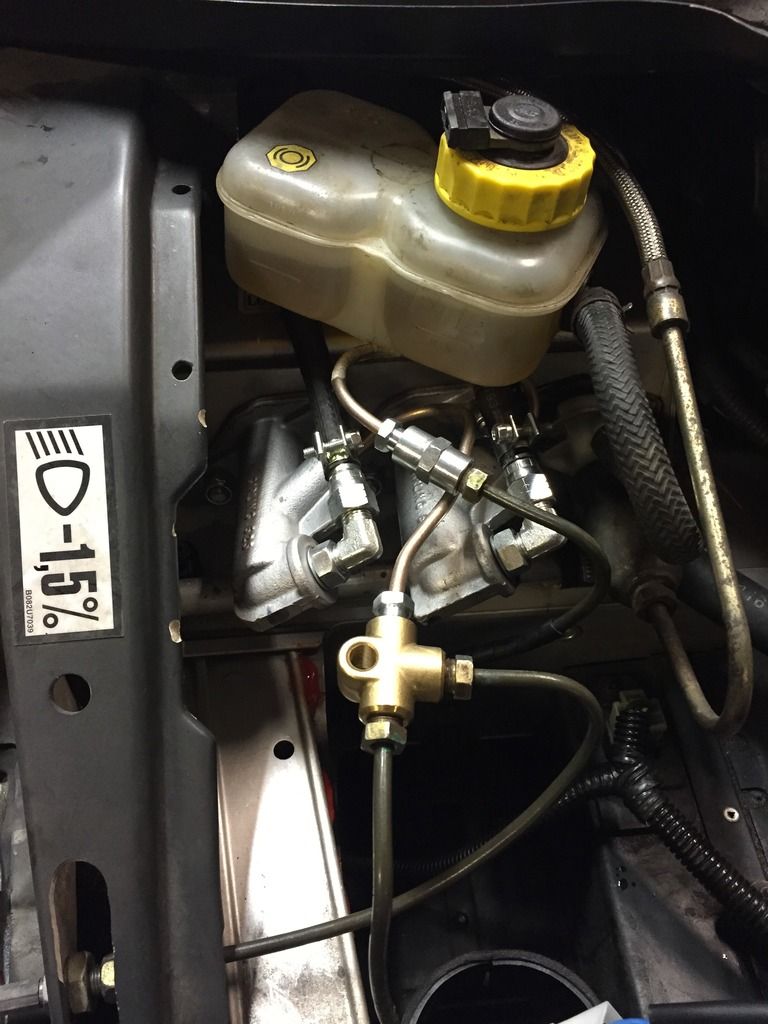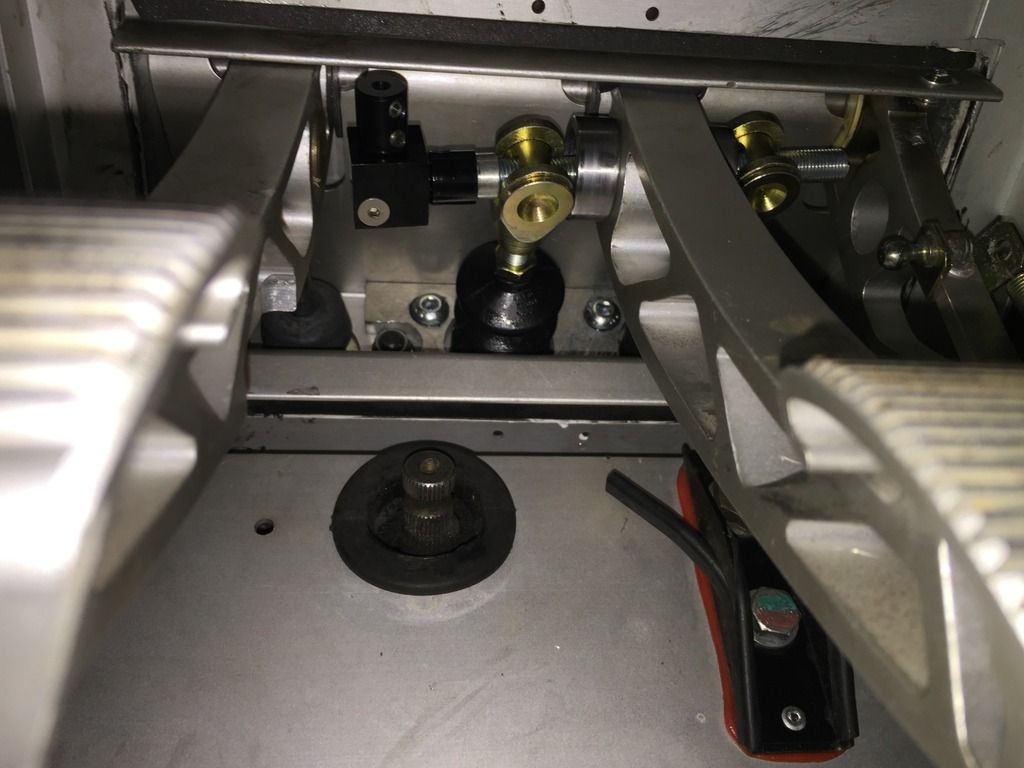Maybe you ought to read Jimmy's results when he eliminated his servo. Once he realised how nasty it was he put the servo straight back in!
If he kept the same master cylinder and just removed the servo then that's to be expected and normal behaviour.
With a servo you also use an 'oversized' MC as the servo adds the force but the bigger MC increases the fluid displacement but this limits travel which pretty much cancel eachother out again. The servo already gives a lot of slack/travel when operating, but if it's removed without changing the MC then you end up with a rock-hard, immovable pedal and little braking.
When going from a servo to a non-assisted setup you also always have to change the MC size to a (much) smaller one. This results in slightly longer travel in the MC (but usually still a little less than with a servo and little or no 'dead' space in the pedal travel) and a different (more linear) hydraulic pressure buildup.
But in the end the hydraulic pressures in the system wether they are assisted or un-assisted are very similar. (except for some early oddball ABS systems that always worked with hydraulic pump generated pressures that were indirectly modulated by the pedal..)
With similar hydraulic pressures in the system, the pads also have similar pressures/clamping on the discs and similar friction and retardation.
It's just that the way the system feels is completely opposite and different people like different setups.
The main reason for servo'd brakes with their big MC's is that they offer a more non-linear brake response that's very good for general road use.
A small/light brake pedal application quickly results in fairly strong retardation (safety!), but the tradeoff is that after the initial application (depending on how agressive the servo is set up) it may not feel much different anymore when pressing down harder and makes modulating the brake pressure hard. Once the servo 'actuates' it pretty much adds a certain force to your own which is much bigger.
VW/Audi/VAG's are notorious for this where just blowing air on the brake pedal puts your head through the windscreen, but pressing harder really doesn't feel much different. So you get to 70-75% of your maximum hydraulic pressure with 30-40% of pedal force, but the remaining 25-30% of hydraulic pressure in the system is 'spread out' over the remaining range of pedal pressures which is not that noticable.
Actually a lot of studies have shown that most drivers never go over 50-70% of the expected pedal force for full brake actuation even right before a crash, which is why all current new cars now have automatic brake-assist which simply opens a second valve in the servo if the pedal is pressed fast enough (even at a low force) and that simply applies the maximum force the servo can all at once to the MC to get to an (artificial) 90+% effective pedal pressure on the MC in a panic situation.
An un-assisted setup feels quite the opposite.. Low brake pedal force results in feeling resistance in the pedal, but little retardation. Pressing on the pedal and increasing the force only moves the pedal a little but more-or-less (depending on pad type, etc.) linearly increases the hydraulic pressures and as a result the retardation but also the opposite where for instance on going into a corner and trail-braking you can gently reduce the pressure on the pedal and have a controlled reduction (and release) of the brakes.
Both setups will lock the wheels if dimensioned properly or if you brake agressively enough to 'shock' the wheels to a stop.
Best-of-both-worlds is something like the BOSCH motorsport ABS which allows you to run an ABS (and stability control) system but keep the un-assisted brake setup for best pedal feel and control. (very, very pricey though..)
Still.. I can well imagine that endurance racers are happy to sacrifice some pedal feel and brake control for being able to get 70% of the brake force at 30% of the leg pressure in their cars, just like power steering in these helps to combat fatigue by sacrificing some feedback.
Is one 'better' than the other? Different.. That's all...
Bye, Arno.

























